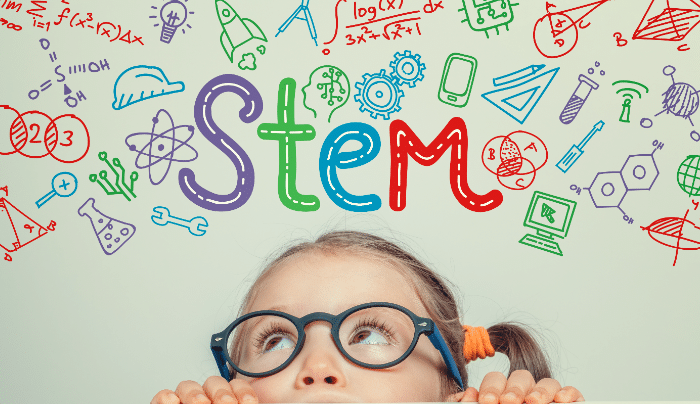The Role Of STEM Education In Nurturing Child Development
From Classroom To Career: The Transformative Impact Of STEM Learning

Imagine a world where children are not just consumers of technology but creators, where curiosity about the natural world translates into problem-solving skills that can change lives. This is the promise of STEM education, a powerful approach to learning that equips young minds with the tools they need for building bright futures.
STEM stands for Science, Technology, Engineering, and Mathematics, and it is essential in nurturing child development. STEM is an interdisciplinary approach to education that encourages students to see these subjects as interconnected ways of understanding the world.
Through hands-on activities, exploration, and collaboration, STEM education ignites a passion for discovery and fosters a growth mindset.
Building a Strong Foundation
Early exposure to STEM concepts is crucial for building a strong academic foundation. Children develop a deeper understanding of the world by engaging in science experiments, working with technology, and exploring basic mathematical principles. This early interaction helps them overcome any anxieties about these subjects later on.
STEM education also strengthens core academic skills like reading, writing, and critical thinking. As children grapple with scientific concepts, they learn to analyze information, ask questions, and communicate their findings effectively. These skills are valuable not just in STEM fields but across all aspects of life.
Nurturing Curiosity and Creativity
Children ask endless questions and have an insatiable desire to explore. STEM education centers, like Insight Early Learning, provide various opportunities to turn this curiosity into meaningful learning experiences.
Through trial and error, students learn the principles of structure and design, all while having fun. This seemingly simple activity encourages creativity, problem-solving, and teamwork.
STEM activities also spark a sense of wonder and a love for discovery. Children can, for example, conduct experiments, build robots, or design their video games. This way, they develop a deeper appreciation for the natural world and the power of human ingenuity.
Working on Problem-solving Skills
The world is full of challenges, and STEM education equips children with the tools they need to tackle them head-on. At its core, STEM is all about problem-solving. Students can learn how to construct a house or design software.
But regardless of the difficulty of assignments, students learn to break down complex problems into smaller, manageable steps. They develop critical thinking skills, allowing them to analyze situations, identify potential solutions, and test their hypotheses.
These problem-solving skills are invaluable in any field, from future doctors diagnosing illnesses to entrepreneurs launching innovative businesses. Therefore, STEM education prepares children to become resourceful and adaptable thinkers, ready to take on the challenges of tomorrow.
Preparing for Future Careers
By exposing children to STEM concepts early on, they can gain the skills and knowledge they need to have rewarding careers. STEM education introduces children to various disciplines, from coding and robotics to biotechnology and environmental science. This early exposure allows them to discover their interests and build a foundation for future academic and professional pursuits.
It’s beneficial even for children who don’t end up working in a traditional STEM field. The skills they develop through STEM education are highly sought-after by employers. These skills are essential for success in various professions, from critical thinking and collaboration to creativity and communication.
Nurturing Collaboration and Teamwork
Many STEM activities require teamwork and collaboration. Students working together on a science project learn to communicate effectively, share ideas, and resolve conflicts. They develop the ability to see things from different perspectives and appreciate the value of teamwork in achieving a common goal.
These collaborative skills are essential for success in today’s globalized world. Effectively working with others is a valuable asset in a professional setting, whether in school or tomorrow. Integrating STEM education into everyday experiences can create a rich learning environment that supports a love for discovery and prepares children for a bright future.
Encouraging a Growth Mindset
A core principle of STEM education is the concept of a growth mindset. This means believing that intelligence and abilities can be developed through effort and perseverance. STEM activities often require trial and error. There will be setbacks and moments of frustration.
However, STEM education fosters a growth mindset, encouraging children to view these challenges as opportunities to learn and grow. Through persistence and a willingness to experiment, students learn that mistakes are not failures but stepping stones to success. This growth mindset is a valuable life skill that can benefit children in academic pursuits and all aspects of life.
Going Beyond the Classroom
There are many ways to make STEM education a part of everyday life for children. Encourage children to explore the natural world around them. Take them on nature walks, visit museums and science centers, and stargaze at night. These experiences can spark curiosity and ignite a lifelong love of learning.
More importantly, ensuring these opportunities are available to all children, regardless of background or socioeconomic status, is essential. At home, we cook together, build things out of Legos or cardboard boxes, and conduct simple science experiments. These activities provide quality family time and reinforce STEM concepts in a fun and engaging way.
The Bottom Line
The role of STEM education in nurturing child development is enormous. It’s about encouraging a generation of critical thinkers, problem-solvers, and innovators. We are investing in the future and building a brighter tomorrow by equipping children with the skills they need to succeed in the 21st century. Here are fun ways to encourage STEM education for kids.
